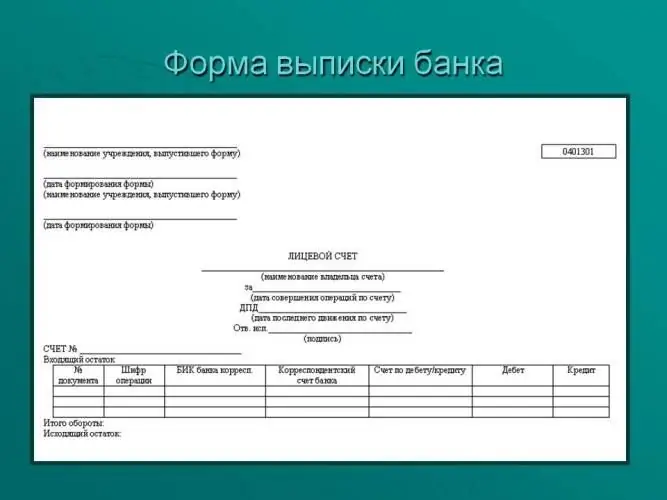2025 Author: Howard Calhoun | [email protected]. Last modified: 2025-01-24 13:10:45
In a market economy, the independent existence of individual small industrial enterprises lasts, as a rule, no longer than 3-5 years. To survive in a competitive environment, various associations are created - a cartel, a syndicate, a trust, a concern. Consider how these concepts differ from each other.
Types of production associations
Cartel - an alliance of different enterprises in a certain industry. Each of the participants has independent property and the right to dispose of the manufactured products. The cartel members are united by an agreement on the distribution of the sales market, on quotas for the production of certain products, and the joint regulation of prices.
The syndicate is a kind of cartel. Its participants also retain both legal and economic independence, but, as a rule, a separate structure is created to sell their products. This form is typical for enterprises of the metallurgical and mining industries.

Trust is an association in which previously independent enterprises lose their legal and financial independence. In this case, the property of the participants merges. This is done either throughcombining the assets of individual entities, or when the head organization of the trust buys out a controlling stake in other enterprises. That is, trusts are a form of merger in which all forms of production and economic activity of the participants are combined.
A concern is a union of legally independent enterprises of individual industries. Such associations can be "horizontal" or "vertical", they gather in production chains representatives of technologically interconnected or separate types of industries. The entry of enterprises into concerns is typical for technologically complex industries. At the same time, all participants retain legal independence, having the status of joint-stock companies.
The group's joint activities are managed by a parent organization called a holding.
Trust as a single production and economic complex
The meaning of the word "trust" is based on English trast - faith, trust. In economics, "trust" refers to both the process of transferring funds to trust management, and the result of this activity - the combined assets themselves. In addition, this concept implies a serious financial responsibility of the one who takes the mentioned funds under his guardianship.

Thus, the concept of "trust" involves the association of independent entities to conduct common production and economic activities. Participants can be legal entities orindividual entrepreneurs.
A bit of history
The first trust appeared in the USA in 1879. It was the oil industry giant Standardoil. The trustee managed the business entities included in the trust. This model was later copied in other industries. In the Russian Empire, trusts were mostly foreign. Under the Soviet regime, a decree of the All-Russian Central Executive Committee defined a trust as a state-owned industrial enterprise with the right to independent economic activity, approved the concept of authorized capital, and introduced a distinction between fixed and working capital.
In 1927, the regulation on industrial trusts appeared, expanding the powers to manage property. But by the end of 1930, as a result of a change in the management of economic activities, their rights were severely limited. Subsequently, the very concept of "trust" began to be used to refer to a separate production entity.
What is a construction trust
Construction is the branch of production, the specificity of which implies close cooperation of all participants in the process to organize common joint activities. Thus, the construction trust is an exemplary model that gives an idea of trusts as such. Let's consider this concept in a little more detail.
The construction trust is the main self-supporting link in management. It has material and labor resources and has economic independence. It includes directlyproduction units, support services and farms.

The main tasks of the trust are high-quality and timely construction and commissioning of capacities and construction facilities, intensification of construction production and increase in its efficiency, rational use of capacities and increase in labor productivity, reduction of the cost of work and implementation of necessary environmental measures.
Building trusts are organizations that operate most often in a contractual way. At the same time, the facilities are constructed and handed over to the customer in accordance with the concluded contracts with the help of the enterprise's own material, technical and human resources.
What are trusts?
Building trusts are not always homogeneous structures. They can vary greatly in terms of the nature of the contractual relationship (general contracting and subcontracting), the type of work performed (general construction or specialized), areas of activity.

In addition, construction trusts are organizations with a clearly structured management system. Functional personnel include workers, foremen, foremen, surveyors and other persons directly involved in production activities. To the linear - employees of the apparatus of the trust, performing the functions of preparing and supporting the workflow.
The trust is managed by its administration.
Recommended:
Combination of enterprises. Associations and unions. Types of business combination

Business is not always competition. In many cases, firms operating in the same industry and even with the same clients join forces. But how?
A bank statement is The concept, necessary forms and forms, design examples

When purchasing any banking product, any client, sometimes without knowing it, becomes the owner of an account with which you can carry out income and debit transactions. At the same time, there must certainly be a certain tool that allows any client to exercise control over the movement of their own funds. This is a bank statement. This is a document that is usually issued upon request to the client. However, not everyone is aware of this possibility
Mutual settlements between organizations: drawing up an agreement, necessary documents, forms of forms and rules for filling out with examples

Settlement transactions (offsets and settlements) between business entities are quite common in business practice. The result of these operations is the termination of the mutual rights and obligations of participants in civil relations
Documents for property deduction: general information, required forms and forms

Registration of a property deduction is a procedure that many citizens of the Russian Federation are interested in. This article will show you how to get it. What needs to be prepared? Under what conditions and to what extent can one claim a property type deduction?
Insurance: essence, functions, forms, concept of insurance and types of insurance. The concept and types of social insurance

Today, insurance plays an important role in all spheres of life of citizens. The concept, essence, types of such relations are diverse, since the conditions and content of the contract directly depend on its object and parties

